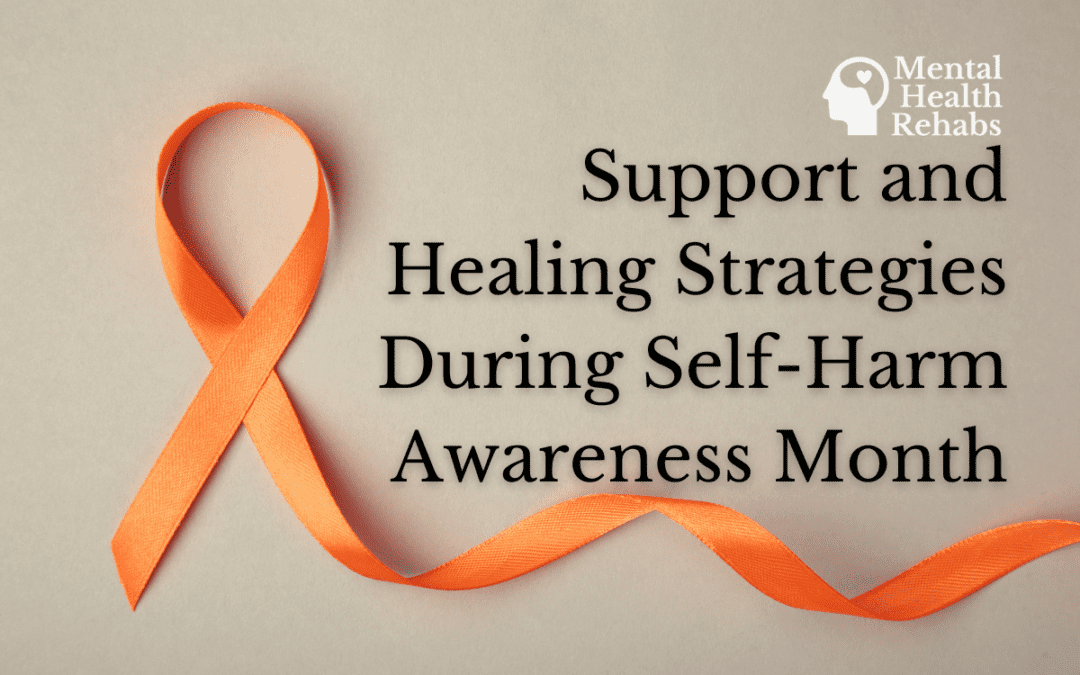March marks Self-Awareness Month, a period dedicated to shedding light on a topic that often remains shrouded in silence and stigma. Whether you directly experience the impact, know someone who does, or simply want to contribute positively to this significant cause, consider this article your starting point for education and engagement.
Understanding Self-Harm
Self-harm, also called self-injury, refers to the intentional act of causing physical harm to oneself as a way to deal with overwhelming feelings or situations.
According to the National Alliance on Mental Illness (NAMI), common forms of self-harm include cutting, burning, hitting oneself, and other behaviors that inflict pain or injury. It’s essential to recognize that self-harm is not a mental illness in itself but a behavior that indicates deep emotional distress.
One of the most significant challenges in addressing self-harm is the myriad of misconceptions surrounding it. Many believe that self-harm is an attention-seeking behavior or exclusively linked to suicidal thoughts. However, experts assert that individuals often use self-harm as a coping mechanism, a way to manage intense emotional pain, or a means to express feelings that they cannot put into words.
The Importance of Self-Harm Awareness
Raising awareness about self-harm is a crucial step toward creating a society that addresses mental health with compassion, understanding, and practical support. Awareness is vital for several reasons:
- Reduces Stigma and Misconceptions: Increasing awareness significantly reduces the stigma and misconceptions surrounding self-harm. By providing accurate information and sharing personal stories, we challenge harmful stereotypes and foster a more inclusive environment. This change encourages open discussions about self-harm, leading to a broader understanding of it as a complex issue, not a taboo subject.
- Improves Support Systems and Resources: Enhanced awareness leads to the development and improvement of support systems and resources for those affected by self-harm. It ensures better access to mental health services, self-harm hotlines, therapeutic interventions, and community support groups. Awareness campaigns can drastically improve treatment outcomes by highlighting the need for early intervention.
- Empowers Individuals and Communities: Informing the public about self-harm empowers affected individuals, their families, friends, and entire communities. Knowledge enables us to recognize signs of distress and encourage seeking support, fostering a culture where mental health is openly discussed and prioritized.
Strategies for Supporting Someone Who Self-Harms
When someone you care about is struggling with self-harm, it can be overwhelming and confusing. You may feel unsure about what to say or how to help. Here are some strategies to support someone who self-harms, emphasizing compassion, understanding, and actionable steps.
Understanding the Signs
First, familiarize yourself with the signs of self-harm. These might include unexplained cuts, bruises, or burns, wearing long sleeves or pants even in warm weather, and sudden withdrawal from social interaction. Recognizing these signs can help you approach the individual with care and concern.
Starting the Conversation
Approaching someone about their self-harm requires sensitivity and tact:
- Choose the Right Moment: Find a private, quiet time to talk, ensuring the person feels safe and undistracted.
- Express Concern Without Judgment: Start by expressing your concern for their well-being. Avoid accusatory or judgmental language, such as “Why are you doing this?” Instead, say, “I’ve noticed some changes in your behavior, and I’m genuinely worried about you.”
- Be Patient and Listen: Allow them to share as much or as little as they want. Be an active listener, showing empathy and understanding without pressing for more information than they are willing to give.
Providing Emotional Support
Your role is to provide emotional support:
- Validate Their Feelings: Acknowledge the pain and difficulty they are experiencing. Let them know that their feelings are valid and that feeling upset or confused is okay.
- Encourage Communication: Let them know you listen whenever they feel ready to talk. Encourage them to express their feelings in whatever way they feel comfortable.
- Avoid Simplifying Their Feelings: Avoid clichés like “It will all be better tomorrow.” Instead, acknowledge that their feelings are complex and valid.
Encouraging Professional Help
Offer to help them find a therapist, counselor, or support group. You can offer to accompany them to appointments if they’re nervous. Share resources like hotlines, websites, and local mental health services. But remember that they may need more time to be ready for help. Reassure them that it’s okay and that you’ll be there when they’re ready.
Resources to Tap Into This Self-Harm Awareness Month
For individuals who self-harm and those looking to support them, there are various resources available for help, guidance, and information. Here’s a list of types of resources and where to find them:
- National Suicide Prevention Lifeline: Available 24/7. Languages: English and Spanish. Call or text 988.
- Crisis Text Line: Text HOME to 741741 to reach their volunteer center.
- Reddit Forums: A subreddit for self-harmers to relate to each other and build a community.
- NAMI Helpline: Call at 800-950-6264, text “Helpline” to 62640, or chat.
Spreading Awareness All Year Long
It’s important to remember that the journey towards understanding self-harm goes beyond a month. Every conversation sparked, every piece of information shared, and every gesture of support contributes to a larger cultural shift towards compassion and empathy for those experiencing mental health challenges.
We encourage you to carry the message of hope and recovery beyond this month. Share what you’ve learned and continue to advocate for mental health awareness in your circles. Together, we can create a society where individuals feel supported to seek help for self-harm and where recovery is not just a possibility but a reality.

